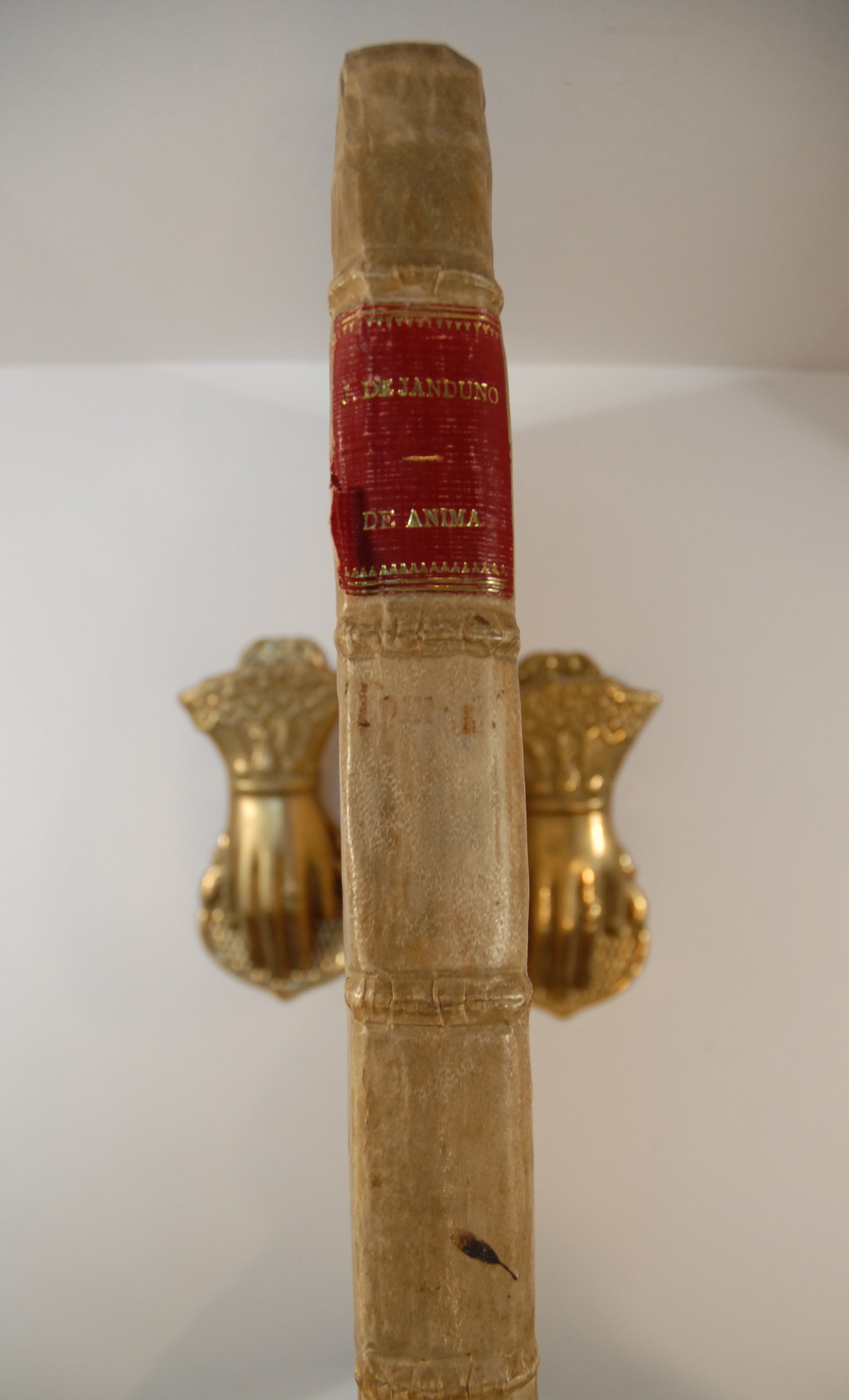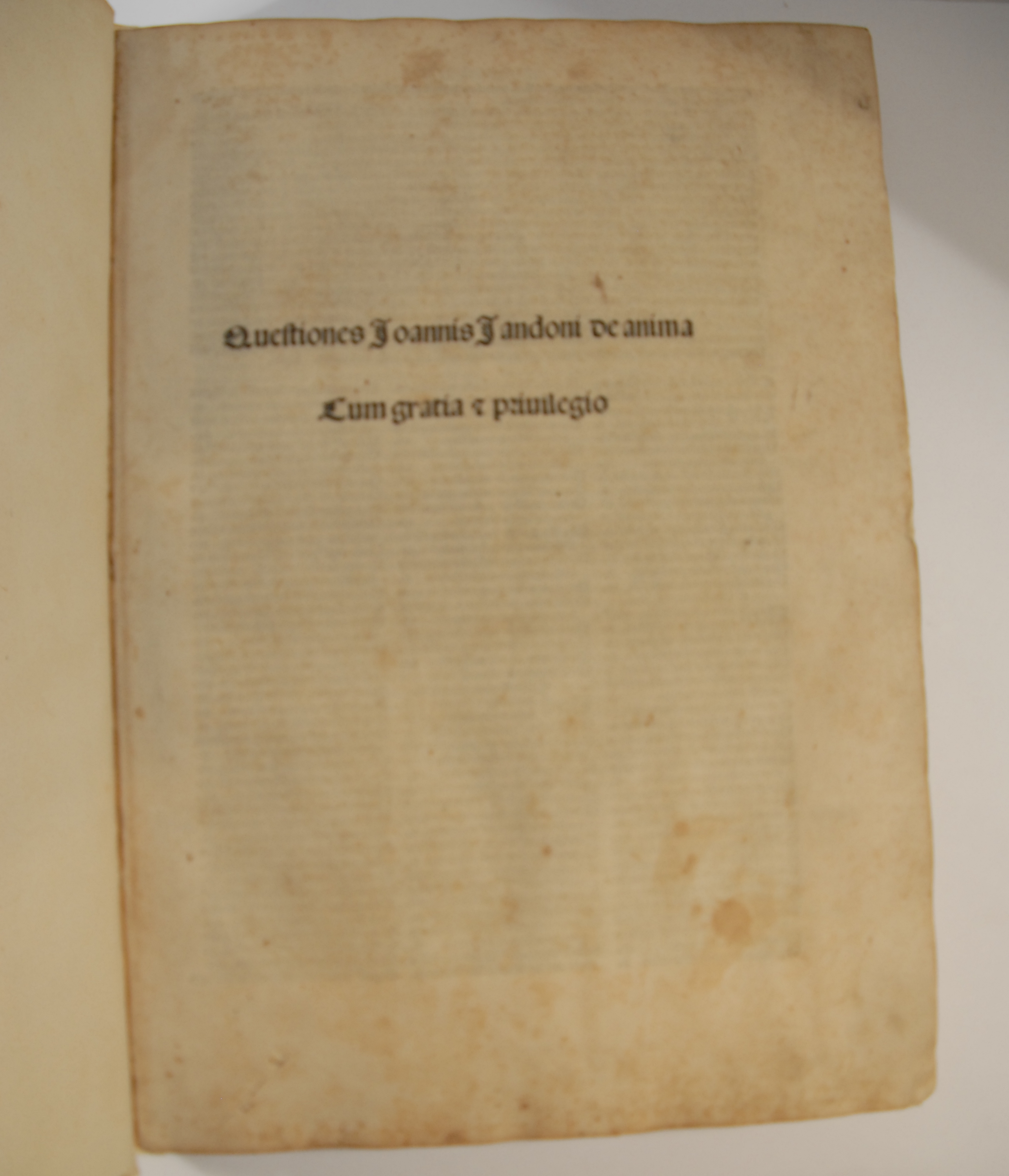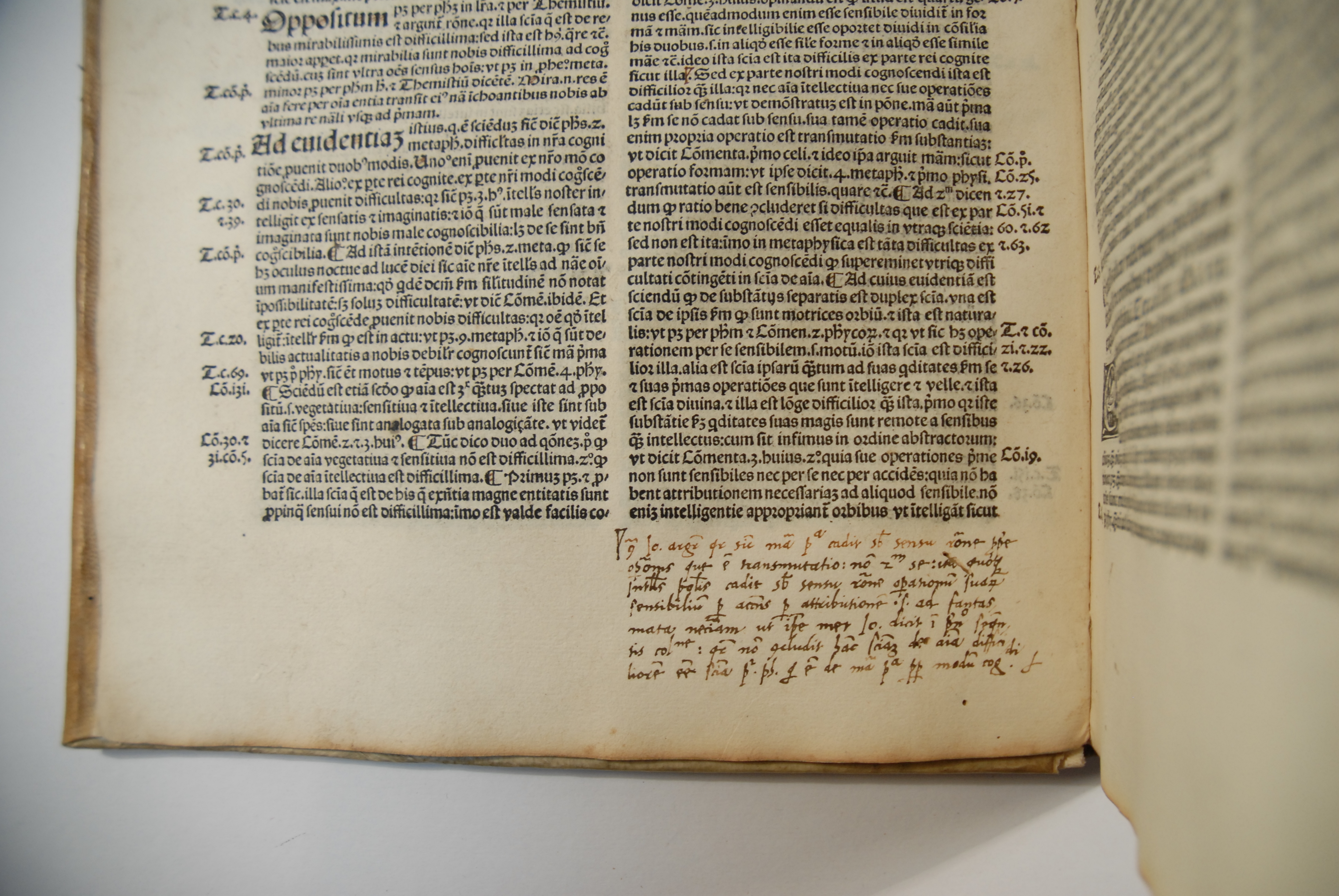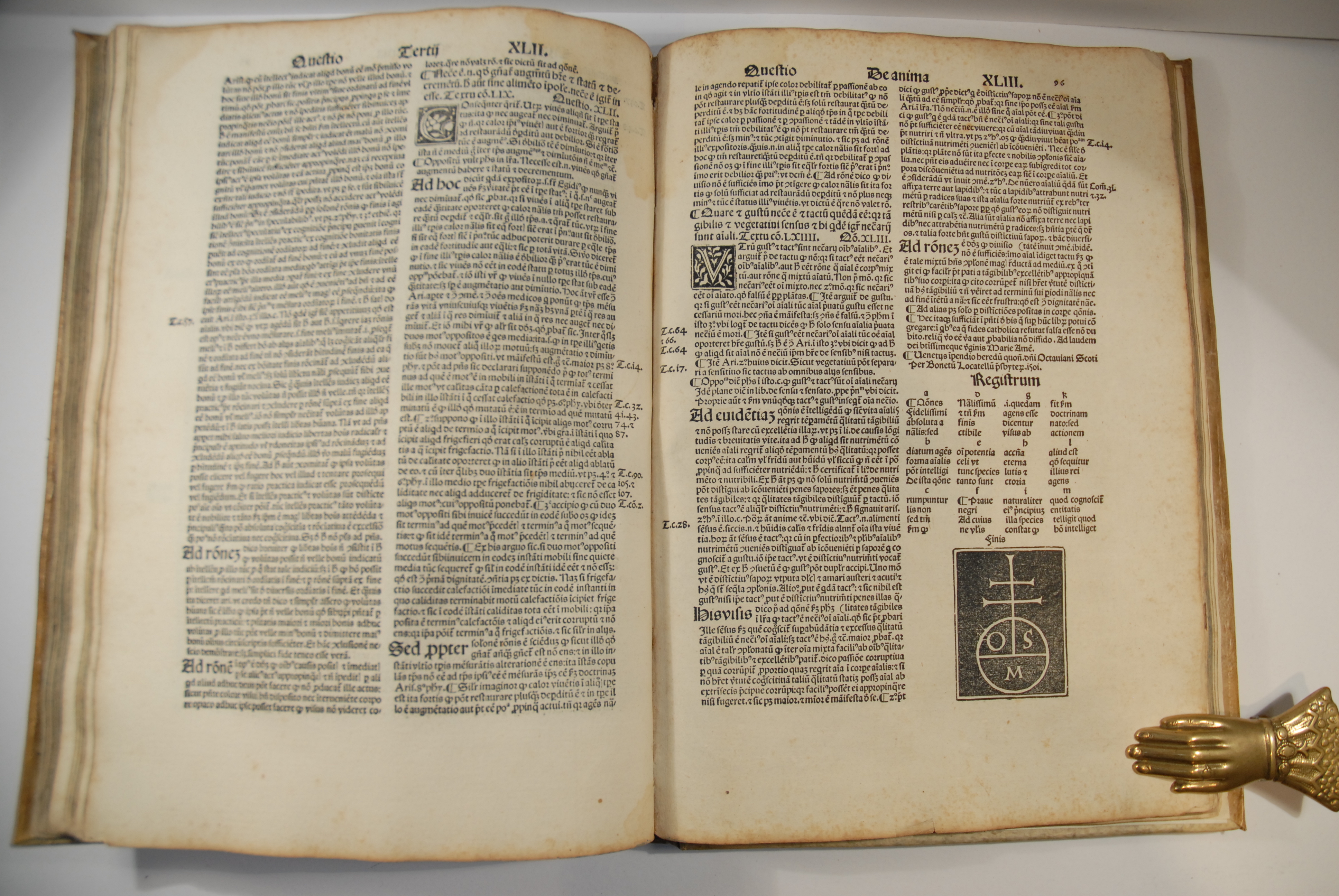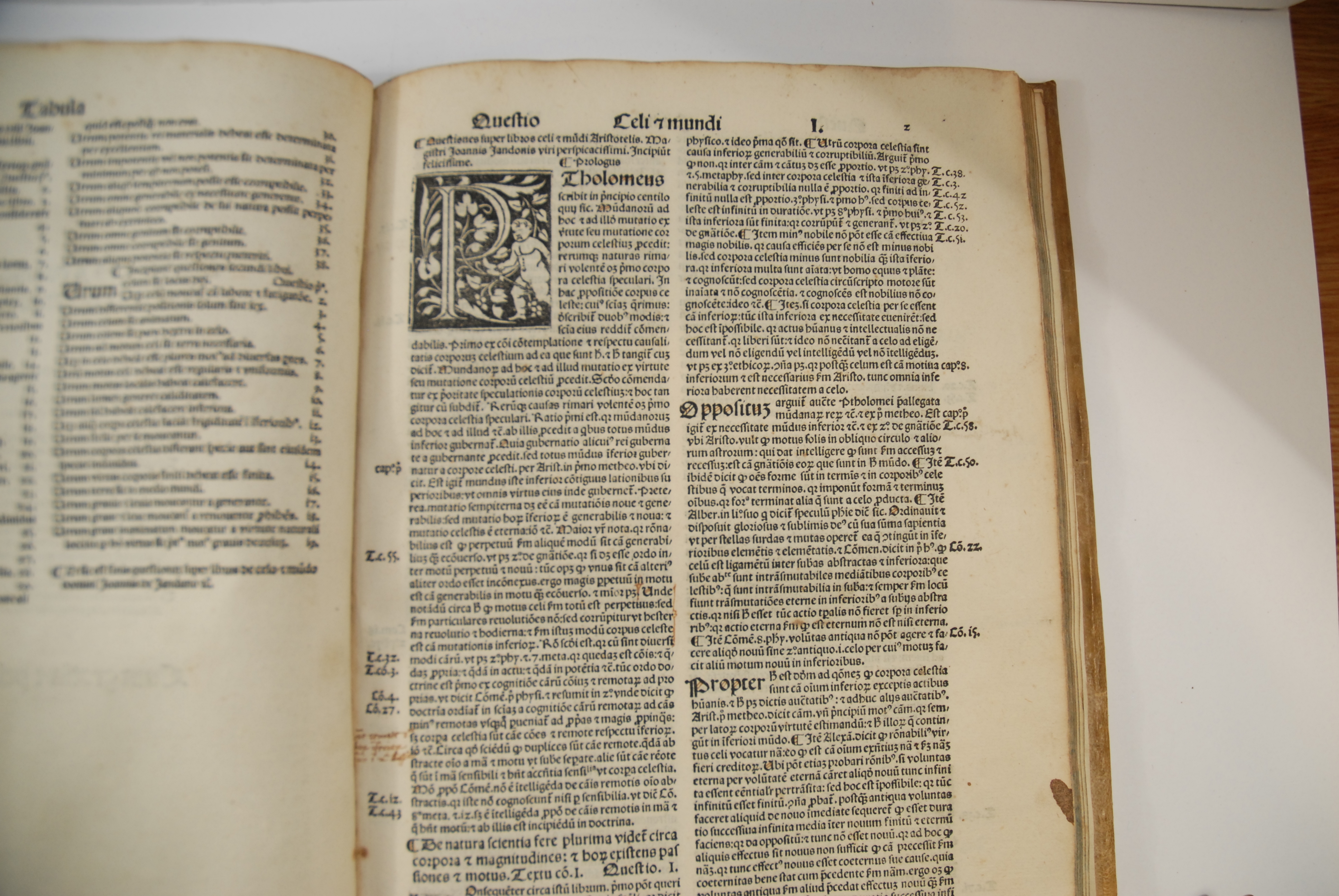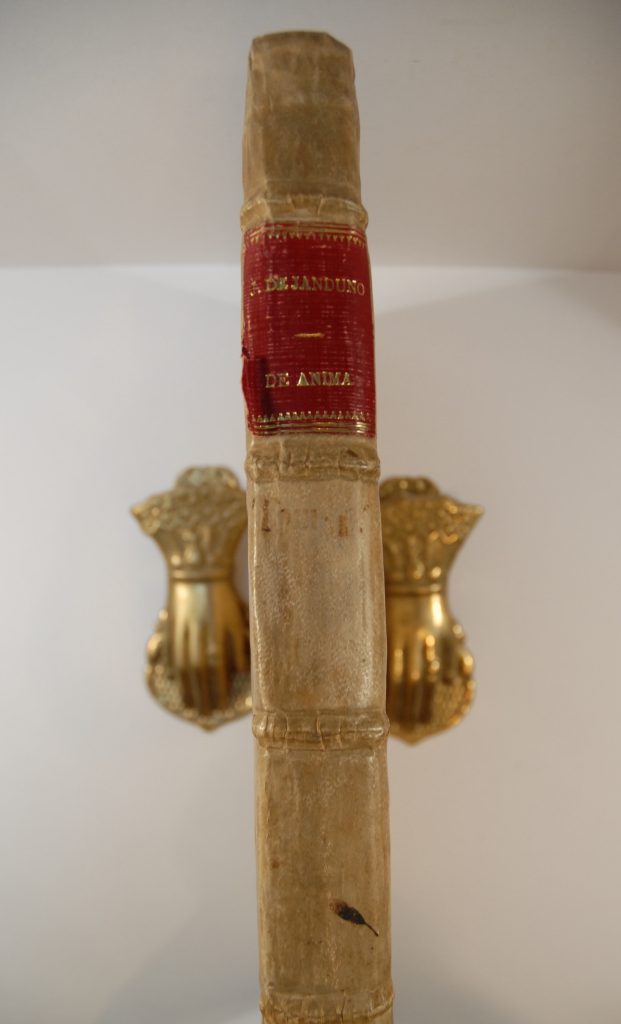JANDUNO, Joannes de
Questiones Joannis Jandoni de anima. (with) Questiones Joannis Jandoni De celo et mundo.
Venice, Octavianus Scotus per Bonetum Locatellum, 1501£3,950.00
Folio. Two works in one, FIRST EDITION of second, ff. 96 + 30. Gothic letter, double column. Separate t-p and printer’s device to each, decorated initials. Light age yellowing, slight marginal foxing, mostly marginal water stain to upper inner corner in places, first t-p a bit soiled, intermittent worm trail to lower margin, more visible in final ll. A good, crisp, well-margined copy in later Italian vellum, early ms title and modern label to spine. Occasional contemporary marginalia.
A good, crisp, well-margined copy of these uncommon editions of two most influential C14 commentaries to Aristotle’s ‘De anima’ and ‘De caelo et mundo’ (FIRST EDITION) edited by the monk and translator Girolamo Suriano (d. 1522). Joannes de Janduno (or Jean de Jandun or Johannes de Gandavo) (c.1285-1323) was a French philosopher and theologian. Professor at Paris, he was influenced by Averroism, a ‘radical’ form of Aristotelianism. Averroists thought that philosophy was separate from theology and the natural (philosophical) order from the supernatural; they were accused of teaching the existence of two potentially contradictory truths. De Janduno was excommunicated for heresy by Pope John XXII, having been charged with co-authoring a treatise on the separation of temporal and secular authority. Aristotle’s ‘De anima’ is a study of the soul as the essence of life. Beside ‘biological’ issues like nutrition and reproduction, ‘De anima’ discusses the nature and meaning of ‘sensing’, intellect, and the characteristics which define an organism as ‘living’. A treatise on cosmology, ‘De celo et mundo’ illustrates how the celestial spheres are immutable and governed by different rules to the bodies (made of water, fire, air and earth) which inhabit the ‘sublunary’ sphere. De Janduno’s commentaries are subdivided into ‘quaestiones’ concerned with specific issues. In the commentary to ‘De anima’ he analyses ‘sensing’ as an active faculty (‘sensus agens’) and the nature of ‘intellectus’, in which the early annotator of this copy was most interested. In the commentary to ‘De celo et mundo’ he focuses on the movement of celestial spheres, what is mobile or immovable, finite and infinite, corruptible and incorruptible. De Janduno’s commentaries were fundamental to the diffusion of Averroism in C14 Europe.
Octavianus Scotus collaborated with Boneto Locatelli on the publication of numerous Italian and Latin texts, including editions of the works of Aristotle and Averroës.
Fordham and NLM copies recorded in the US.USTC 762266; BM STC It. p. 357. Not in Brunet or Graesse.Florida, St Bonaventure and Bakken Museum copies recorded in the US.USTC 762297; Adams J66. Not in BM STC It., Brunet or Graesse.In stock


